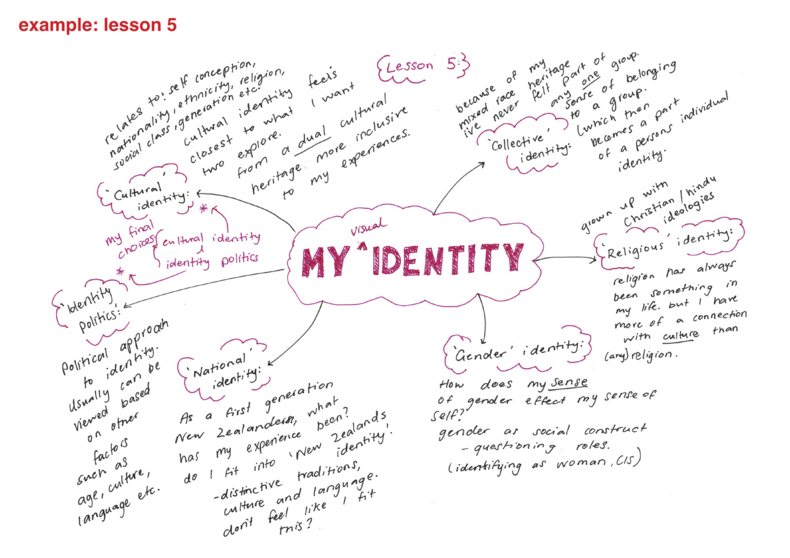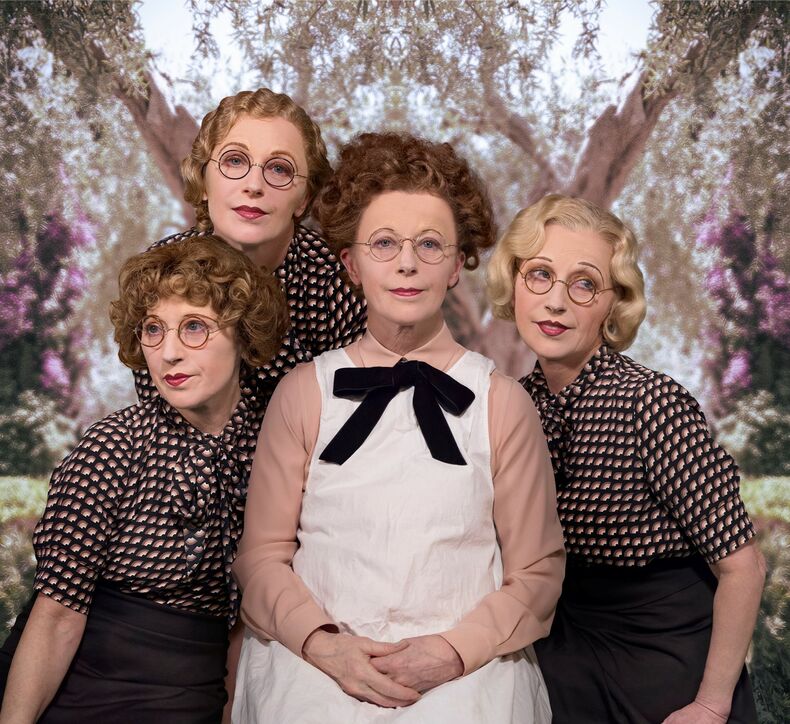This is the stage that links research and making. Looking at everything you have gathered and all the notes you have taken in your workbook, you should be able to see some themes occurring naturally. Now you can begin to think about how you are going to re-visualise this. How can you merge your own visual research and personal collections into a series of photographs? Try using the brainstorming method where you write something like, ‘MY IDENTITY’ in the middle and arrows outwards with all your different points. I find this the easiest way to organise your thoughts when they are a bit all over the place! Once you have finalised what you will be exploring through your self-portraits, you can begin thinking about how that will translate into a photograph.
When working with a project that is research-heavy like this one, it can be helpful to write yourself a research question. Your final photographic work will seek to answer this question. This could be something general, for example, “How can self-portraiture represent my own sense of cultural identity?” or something more specific to your theme. Using a research question can be a helpful way to anchor your project and give yourself a focus point if you get lost.
Next, in my workflow, I start to draw scenes that I might want to recreate in a photograph. However, this style of working all depends on what kind of photographer you are and what kind of photographs you want to take. Some shoots require a huge amount of planning and studiously following a shot list. Other shoots can be a lot more experimental and candid with little preparation needed. Understanding the way you work best as a photographer is extremely important, a workflow that suits you will help you be as creative and productive as possible.

